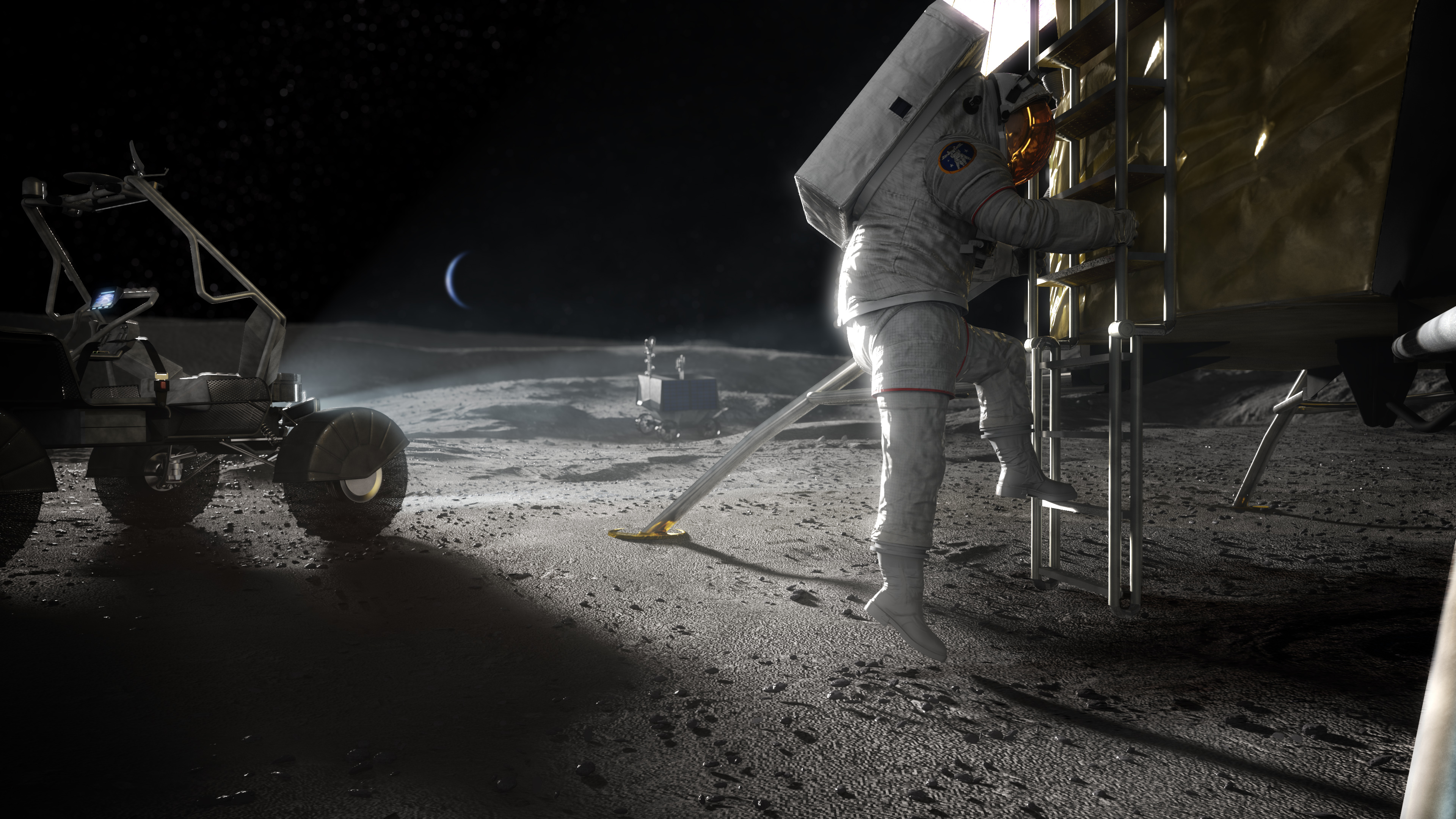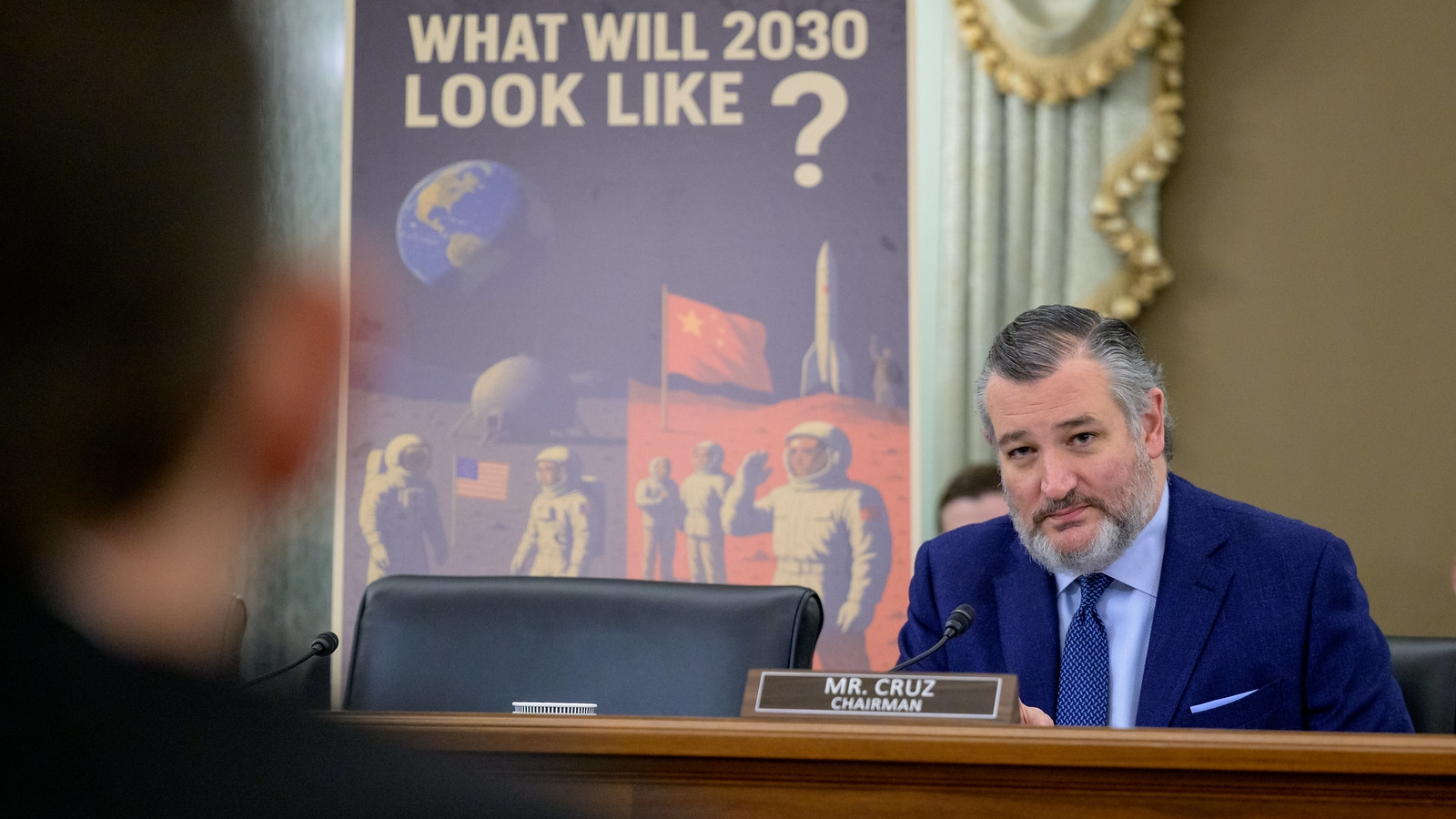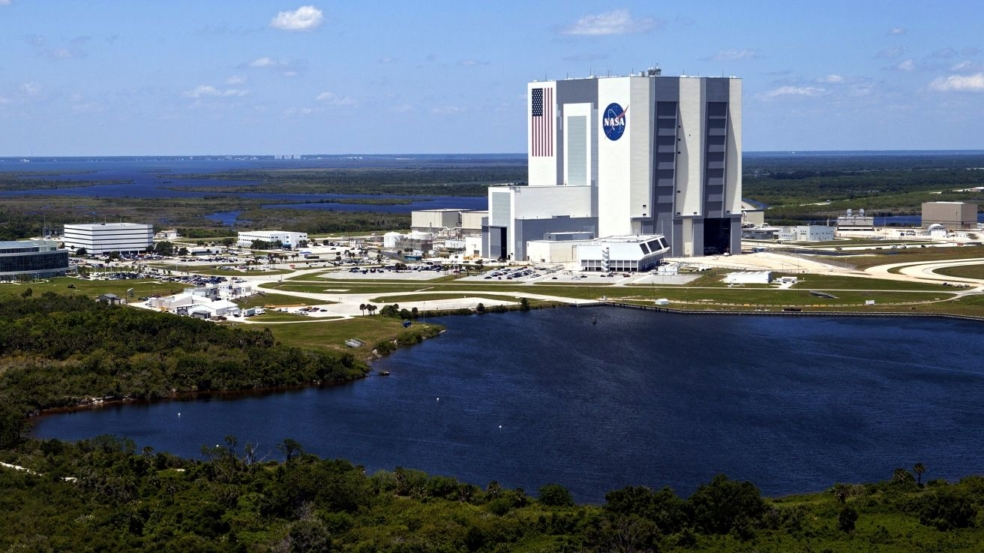
Saving Gateway, SLS and Orion? Sen. Ted Cruz proposes $10 billion more for NASA's moon and Mars efforts
Sen. Ted Cruz's newly unveiled legislative directives for Senate Republicans’ budget reconciliation bill would dedicate almost $10 billion to help win the "new space race" with China.

U.S. Sen. Ted Cruz (R-Texas), chairman of the Senate Committee on Commerce, Science, and Transportation, on Friday (June 5) unveiled his legislative directives for Senate Republicans’ budget reconciliation bill.
Those directives make beating China to the moon and Mars a priority; the proposal dedicates nearly $10 billion over current levels to "win the new space race with China and ensure America dominates space."
It also makes funds tech designed to enable future Mars mission, key aspects of NASA's Artemis lunar program, the agency moon-to-Mars program and the International Space Station (ISS).

Details, details, details
A key piece of the new proposal called Section 0005 would provide $9.995 billion for fiscal year 2025, as supplemental funding for critical infrastructure in these areas. Here's where most of this proposed money would go:
- Mars Telecommunications Orbiter: $700 million for the commercial procurement of a Mars Telecommunications Orbiter. This orbiter would be dual-use; it would aid NASA's Mars Sample Return campaign to haul core samples of Mars to Earth and future crewed Mars missions as well. (President Trump's 2026 budget request cancels Mars Sample Return.)
- Gateway: $2.6 billion to fully fund the moon-orbiting space station known as Gateway, which is currently a key part of NASA's Artemis architecture. (President Trump's 2026 budget proposal cancels Gateway.)
- Space Launch System: $4.1 billion to fund Space Launch System (SLS) rockets for the Artemis 4 and Artemis 5 missions. SLS is the only operational, human-rated rocket that can get astronauts to the moon, as Cruz's new proposal notes. This funding would not prevent the on-ramping of commercial rockets — such as SpaceX's Starship, which is still in development — if and when they become available.
- Orion Crew Vehicle: $20 million to fund the continued procurement of the fourth Orion capsule, for use with SLS for Artemis 4 and reuse on subsequent Artemis missions. (The White House's proposed 2026 budget cancels both SLS and Orion after the Artemis 3 moon-landing mission, which is slated to launch in 2027.)
- International Space Station: $1.25 billion for ISS operations over five years. This would keep the orbiting lab going through the planned end of its life in 2030 and help ensure an orderly transition to private space stations in low Earth orbit after that.
- U.S. Deorbit Vehicle: $325 million to fund the U.S. Deorbit Vehicle, which will bring the ISS down safely at the end of its operational life. In 2024, NASA selected NASA selected SpaceX to build this spacecraft.
NASA centers
The bill would provide $1 billion for infrastructure improvements at NASA's human spaceflight centers.
NASA’s infrastructure backlog across all of its centers is above $5 billion, according to the newly released document. The $1 billion in center funding would focus on the agency's human spaceflight centers, and on the infrastructure needed to beat China to Mars and the moon.
Here are the details:
Get the Space.com Newsletter
Breaking space news, the latest updates on rocket launches, skywatching events and more!
- Stennis Space Center: $120 million for infrastructure repairs and upgrades. Stennis is the home of NASA’s rocket engine testing for the heavy-lift rocket engines necessary to get to deep space.
- Kennedy Space Center: $250 million for infrastructure repairs. KSC is NASA’s premier launch complex and the site from which every NASA astronaut has been sent to space.
- Johnson Space Center: $300 million for infrastructure repairs and upgrades. JSC is home to mission control, the astronaut corps, and overall space operations.
- Marshall Space Flight Center: $100 million for infrastructure repairs and upgrades. Marshall is NASA’s main home for propulsion research.
- Michoud Assembly Facility: $30 million for infrastructure repairs and upgrades.

Timelines
Section 0005 also requires that at least 50% of the funds be obligated no later than Sept. 30, 2028; 100% of them no later than Sept. 30, 2029; and all associated outlays no later than Sept. 30, 2034.
The Congressional Budget Office preliminarily estimates that $9.96 billion will be obligated and expended within a 10-year window.
You can read the text of the bill here.
Join our Space Forums to keep talking space on the latest missions, night sky and more! And if you have a news tip, correction or comment, let us know at: community@space.com.

Leonard David is an award-winning space journalist who has been reporting on space activities for more than 50 years. Currently writing as Space.com's Space Insider Columnist among his other projects, Leonard has authored numerous books on space exploration, Mars missions and more, with his latest being "Moon Rush: The New Space Race" published in 2019 by National Geographic. He also wrote "Mars: Our Future on the Red Planet" released in 2016 by National Geographic. Leonard has served as a correspondent for SpaceNews, Scientific American and Aerospace America for the AIAA. He has received many awards, including the first Ordway Award for Sustained Excellence in Spaceflight History in 2015 at the AAS Wernher von Braun Memorial Symposium. You can find out Leonard's latest project at his website and on Twitter.
You must confirm your public display name before commenting
Please logout and then login again, you will then be prompted to enter your display name.
